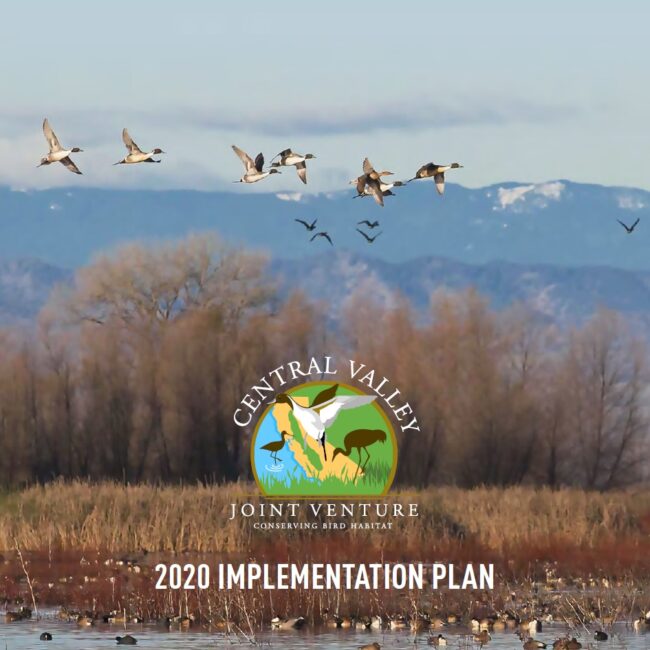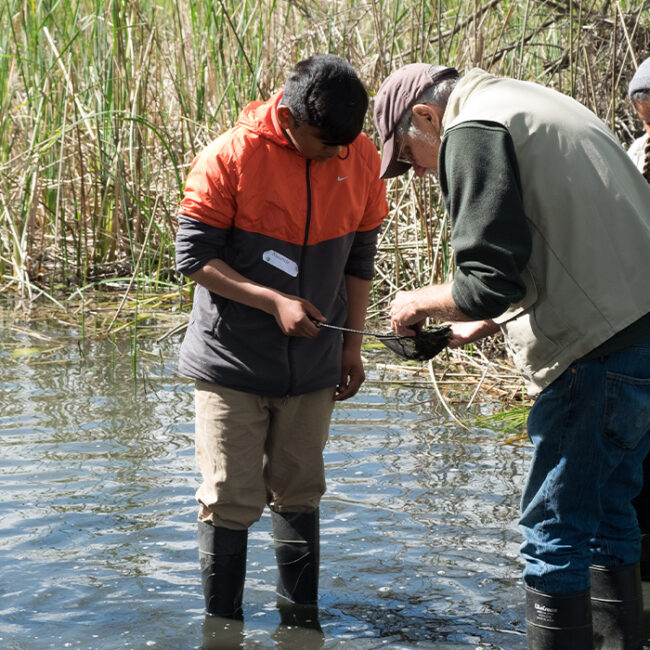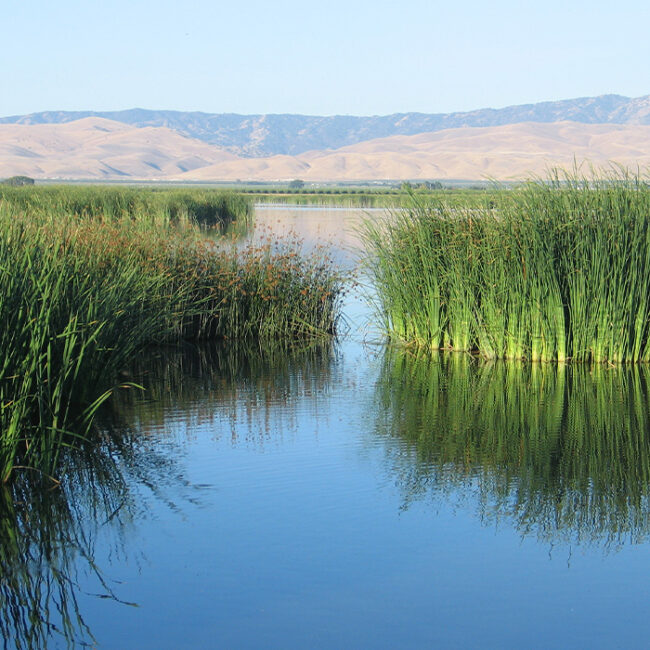Monitoring & Evalution Plans
These monitoring and evaluation plans identify priority information needs necessary to strategically advance conservation planning, and achieve those objectives described in the CVJV Implementation Plan.
The Central Valley of California supports one of the largest wintering shorebird populations of any inland site in North America and also sustains widespread breeding populations of black-necked stilts, American avocets, and killdeer. In addition, large and varied populations of waterbirds (egrets, herons, ibis, bitterns, rails, grebes, pelicans and cormorants) also depend on the Central Valley during the wintering and breeding periods While shorebird and waterbird conservation was not targeted in the original 1990 Central Valley Habitat Joint Venture Implementation Plan, these bird groups undoubtedly benefited from many of the habitat conservation achievements generated by the plan. The Monitoring & Evaluation Plan for Shorebirds and Waterbirds consists of the highest priority information needs to advance conservation planning and implementation in the Central Valley Joint Venture.
The Central Valley of California has lost over 98% of its riparian habitat in the past 150 years and riparian habitat loss may be the most important cause of population declines among songbird species in western North America. Several once common species are now extirpated from the Central Valley. The Central Valley Joint Venture is seeking to reverse this decline, and in its 2006 Implementation Plan has developed population objectives for a suite of focal species. This monitoring and evaluation plan addresses information needs of the 2006 Implementation Plan in order to strengthen the capacity of the CVJV to set targets and evaluate success in its effort to recover riparian songbird populations.
The Monitoring & Evaluation Plan for wintering waterfowl consists of the highest priority information needs to advance conservation planning and implementation in the Central Valley Joint Venture. The issues in this plan contribute to strengthening the CVJV’s biological foundation by testing key assumptions of the 2006 Implementation Plan, refining bio-energetic models, informing habitat management and evaluating program effectiveness.
The Monitoring & Evaluation Plan for breeding waterfowl consists of the highest priority information needs to advance conservation planning and implementation in the Central Valley Joint Venture. The issues in this plan contribute to strengthening the CVJV’s biological foundation for breeding waterfowl and focus on inventory and assessment of key habitats, and evaluation of the relationship among vital rates, habitat parameters and population response.



